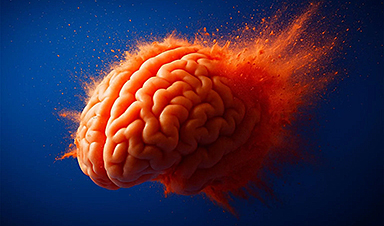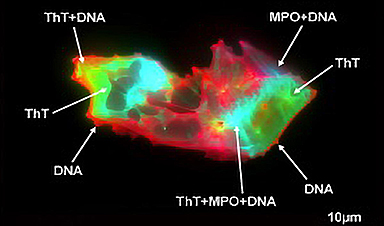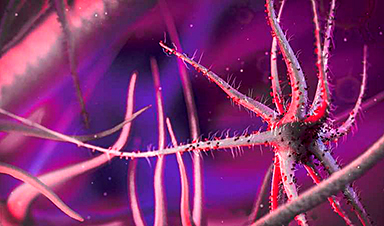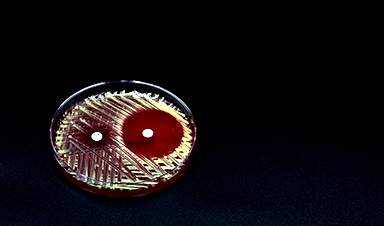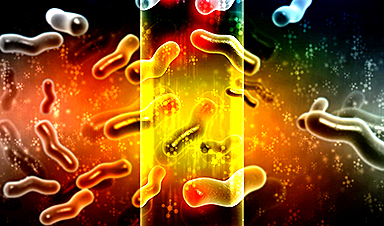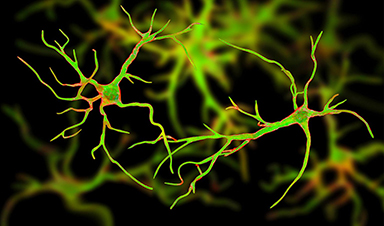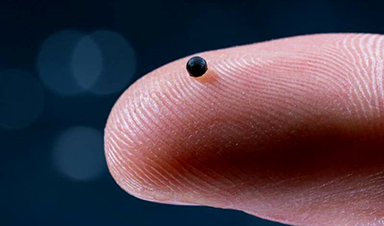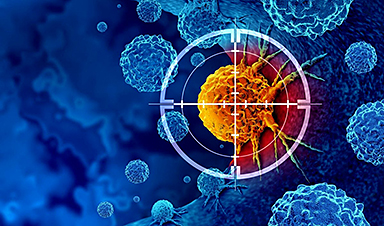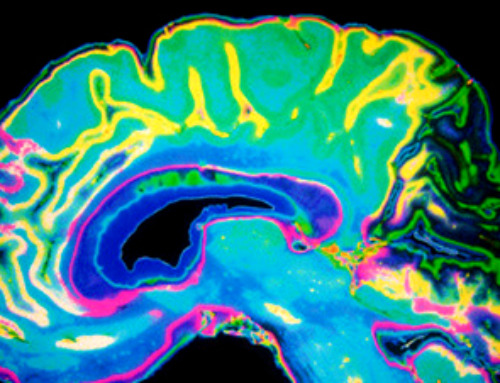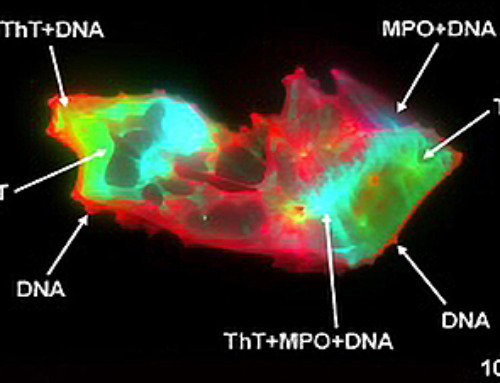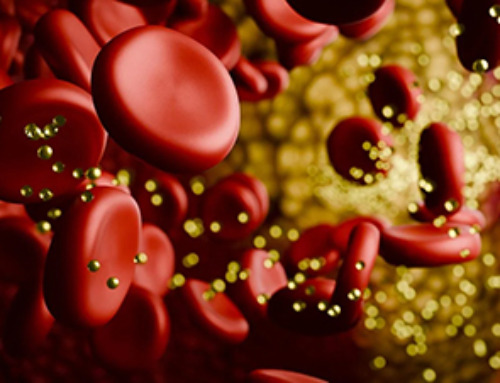Researchers found the PHGDH gene directly causes Alzheimer's and discovered a drug-like molecule, NCT-503, that may help treat the disease early by targeting the gene's hidden function.
A recent study has revealed that a gene previously identified as a biomarker for Alzheimer's disease is not just a marker, it is a direct cause of the disease. Researchers at the University of California, San Diego discovered that the gene plays a previously unrecognized secondary role that actively drives the development of Alzheimer's. Using artificial intelligence, the team was able to uncover this hidden function and identify a potential therapeutic strategy to block the gene's harmful activity.
The findings were published on April 23 in the journal Cell.
Alzheimer's disease affects approximately one in nine people aged 65 and older, making it the most common form of dementia. Although certain genetic mutations are known to cause Alzheimer's, these cases represent only a small fraction of the total. Most individuals with Alzheimer's do not carry mutations in any of the established disease-causing genes. These sporadic or "spontaneous" cases have long puzzled scientists, as their underlying causes remain largely unknown.
Discovering those causes could ultimately improve medical care.
"Unfortunately, treatment options for Alzheimer's disease are very limited. And treatment responses are not outstanding at this moment," said study senior author Sheng Zhong, a professor in the Shu Chien-Gene Lay Department of Bioengineering at the UC San Diego Jacobs School of Engineering.
So Zhong and his team took a closer look at phosphoglycerate dehydrogenase (PHGDH), which they had previously discovered as a potential blood biomarker for early detection of Alzheimer's disease. In a follow-up study, they later found that expression levels of the PHGDH gene directly correlated with changes in the brain in Alzheimer's disease; in other words, the higher the levels of protein and RNA produced by the PHGDH gene, the more advanced the disease. That correlation has since been verified in multiple cohorts from different medical centers, according to Zhong.
Intrigued by this reproducible correlation, the research team decided to investigate in this latest study whether there was a causal effect. Using mice and human brain organoids, the researchers found that altering the amounts of PHGDH expression had consequential effects on Alzheimer's disease: lower levels corresponded to less disease progression, whereas increasing the levels led to more disease advancement. Thus, the researchers established that PHGDH is indeed a causal gene to spontaneous Alzheimer's disease.
In further support of that finding, the researchers determined, with the help of AI, that PHGDH plays a previously undiscovered role: it triggers a pathway that disrupts how cells in the brain turn genes on and off. And such a disturbance can cause issues, like the development of Alzheimer's disease.
Moonlighting role
PHGDH creates an enzyme key for the production of serine, an essential amino acid and a neurotransmitter. Because PHGDH's enzymatic activity was its only known role, the researchers hypothesized that its metabolic function must be connected to an Alzheimer's outcome. However, all their experiments designed to prove so failed.
"At that time, our study hit a wall, and we didn't have a clue of what mechanism it is," said Zhong.
But another Alzheimer's project in his lab, which did not focus on PHGDH, changed all this. A year ago, that project revealed a hallmark of Alzheimer's disease: a widespread imbalance in the brain in the process where cells control which genes are turned on and off to carry out their specific roles.
The researchers were curious if PHGDH had an unknown regulatory role in that process, and they turned to modern AI for help.
With AI, they could visualize the three-dimensional structure of the PHGDH protein. Within that structure, they discovered that the protein has a substructure that is very similar to a known DNA-binding domain in a class of known transcription factors. The similarity is solely in the structure and not in the protein sequence.
Zhong said, "It really demanded modern AI to formulate the three-dimensional structure very precisely to make this discovery."
After discovering the substructure, the team then demonstrated that with it, the protein can activate two critical target genes. That throws off the delicate balance, leading to several problems and eventually the early stages of Alzheimer's disease. In other words, PHGDH has a previously unknown role, independent of its enzymatic function, that through a novel pathway leads to spontaneous Alzheimer's disease.
That ties back to the team's earlier studies: the PHGDH gene produced more proteins in the brains of Alzheimer's patients compared to the control brains, and those increased amounts of the protein in the brain triggered the imbalance. While everyone has the PHGDH gene, the difference comes down to the expression level of the gene, or how many proteins are made by it.
Treatment option
Now that the researchers uncovered the mechanism, they wanted to figure out how to intervene and thus possibly identify a therapeutic candidate, which could help target the disease.
While many current treatments focus on treating the abnormal buildup of the sticky protein called beta-amyloid in the brain, some studies suggest that treating those plaques may be ineffective: essentially by that stage of accumulation, treatment is too late. But the critical pathway discovered in this study is upstream, so preventing this pathway can reduce amyloid plaque formation in the first place.
Given that PHGDH is such an important enzyme, there are past studies on its possible inhibitors. One small molecule, known as NCT-503, stood out to the researchers because it is not quite effective at impeding PHGDH's enzymatic activity (the production of serine), which they did not want to change. NCT-503 is also able to penetrate the blood-brain-barrier, which is a desirable characteristic.
They turned to AI again for three-dimensional visualization and modeling. They found that NCT-503 can access that DNA-binding substructure of PHGDH, thanks to a binding pocket. With more testing, they saw that NCT-503 does indeed inhibit PHGDH's regulatory role.
When the researchers tested NCT-503 in two mouse models of Alzheimer's disease, they saw that it significantly alleviated Alzheimer's progression. The treated mice demonstrated substantial improvement in their memory and anxiety tests. These tests were chosen because Alzheimer's patients suffer from cognitive decline and increased anxiety.
The researchers do acknowledge limitations of their study. One being that there is no perfect animal model for spontaneous Alzheimer's disease. They could test NCT-503 only in the mouse models that are available, which are those with mutations in those known disease-causing genes.
Still, the results are promising, according to Zhong.
"Now there is a therapeutic candidate with demonstrated efficacy that has the potential of being further developed into clinical tests," said Zhong. "There may be entirely new classes of small molecules that can potentially be leveraged for development into future therapeutics."
An advantage of small molecules is that they could even be administered orally, he added, unlike the current treatments that require infusions.
The next steps will be to optimize the compound and subject it to FDA IND-enabling studies.
Reference: "Transcriptional regulation by PHGDH drives amyloid pathology in Alzheimer's disease" by Junchen Chen, Fatemeh Hadi, Xingzhao Wen, Wenxin Zhao, Ming Xu, Shuanghong Xue, Pei Lin, Riccardo Calandrelli, John Lalith Charles Richard, Zhixuan Song, Jessica Li, Alborz Amani, Yang Liu, Xu Chen and Sheng Zhong, 23 April 2025, Cell.
DOI: 10.1016/j.cell.2025.03.045
The study was funded by the National Institutes of Health.
News
New technique overcomes technological barrier in 3D brain imaging
Scientists at the Swiss Light Source SLS have succeeded in mapping a piece of brain tissue in 3D at unprecedented resolution using X-rays, non-destructively. The breakthrough overcomes a long-standing technological barrier that had limited [...]
Scientists Uncover Hidden Blood Pattern in Long COVID
Researchers found persistent microclot and NET structures in Long COVID blood that may explain long-lasting symptoms. Researchers examining Long COVID have identified a structural connection between circulating microclots and neutrophil extracellular traps (NETs). The [...]
This Cellular Trick Helps Cancer Spread, but Could Also Stop It
Groups of normal cbiells can sense far into their surroundings, helping explain cancer cell migration. Understanding this ability could lead to new ways to limit tumor spread. The tale of the princess and the [...]
New mRNA therapy targets drug-resistant pneumonia
Bacteria that multiply on surfaces are a major headache in health care when they gain a foothold on, for example, implants or in catheters. Researchers at Chalmers University of Technology in Sweden have found [...]
Current Heart Health Guidelines Are Failing To Catch a Deadly Genetic Killer
New research reveals that standard screening misses most people with a common inherited cholesterol disorder. A Mayo Clinic study reports that current genetic screening guidelines overlook most people who have familial hypercholesterolemia, an inherited disorder that [...]
Scientists Identify the Evolutionary “Purpose” of Consciousness
Summary: Researchers at Ruhr University Bochum explore why consciousness evolved and why different species developed it in distinct ways. By comparing humans with birds, they show that complex awareness may arise through different neural architectures yet [...]
Novel mRNA therapy curbs antibiotic-resistant infections in preclinical lung models
Researchers at the Icahn School of Medicine at Mount Sinai and collaborators have reported early success with a novel mRNA-based therapy designed to combat antibiotic-resistant bacteria. The findings, published in Nature Biotechnology, show that in [...]
New skin-permeable polymer delivers insulin without needles
A breakthrough zwitterionic polymer slips through the skin’s toughest barriers, carrying insulin deep into tissue and normalizing blood sugar, offering patients a painless alternative to daily injections. A recent study published in the journal Nature examines [...]
Multifunctional Nanogels: A Breakthrough in Antibacterial Strategies
Antibiotic resistance is a growing concern - from human health to crop survival. A new study successfully uses nanogels to target and almost entirely inhibit the bacteria P. Aeruginosa. Recently published in Angewandte Chemie, the study [...]
Nanoflowers rejuvenate old and damaged human cells by replacing their mitochondria
Biomedical researchers at Texas A&M University may have discovered a way to stop or even reverse the decline of cellular energy production—a finding that could have revolutionary effects across medicine. Dr. Akhilesh K. Gaharwar [...]
The Stunning New Push to Protect the Invisible 99% of Life
Scientists worldwide have joined forces to build the first-ever roadmap for conserving Earth’s vast invisible majority—microbes. Their new IUCN Specialist Group reframes conservation by elevating microbial life to the same urgency as plants and [...]
Scientists Find a Way to Help the Brain Clear Alzheimer’s Plaques Naturally
Scientists have discovered that the brain may have a built-in way to fight Alzheimer’s. By activating a protein called Sox9, researchers were able to switch on star-shaped brain cells known as astrocytes and turn them into [...]
Vision can be rebooted in adults with amblyopia, study suggests
Temporarily anesthetizing the retina briefly reverts the activity of the visual system to that observed in early development and enables growth of responses to the amblyopic eye, new research shows. In the common vision [...]
Ultrasound-activated Nanoparticles Kill Liver Cancer and Activate Immune System
A new ultrasound-guided nanotherapy wipes out liver tumors while training the immune system to keep them from coming back. The study, published in Nano Today, introduces a biodegradable nanoparticle system that combines sonodynamic therapy and cell [...]
Magnetic nanoparticles that successfully navigate complex blood vessels may be ready for clinical trials
Every year, 12 million people worldwide suffer a stroke; many die or are permanently impaired. Currently, drugs are administered to dissolve the thrombus that blocks the blood vessel. These drugs spread throughout the entire [...]
Reviving Exhausted T Cells Sparks Powerful Cancer Tumor Elimination
Scientists have discovered how tumors secretly drain the energy from T cells—the immune system’s main cancer fighters—and how blocking that process can bring them back to life. The team found that cancer cells use [...]
